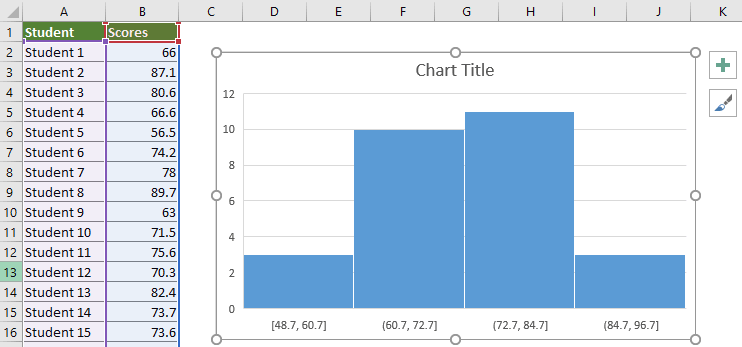

The next we need to add values, so now, add the column “Employment with Company (in years)” to rows area and into values as well.At this point, you have a blank pivot table and pivot chart in your worksheet.In the “Create PivotTable” dialog box, click on the “New Worksheet” and click OK.For this go to Insert Tab ➜ Charts ➜ Pivot Chart ➜ Pivot Chart and Pivot Table.First of all, you need to create a pivot table (or you can also create a pivot table and a pivot chart in one go).Let me tell you how it works ( with the same employee data here). Once you click OK, it’ll insert a new worksheet with the frequency table and a histogram.

Output Option: Select the “New Worksheet” for the output and tick mark the “Chart Output” for the chart.Bin Range: The range where you have bins, yes the one we have just created (Make sure to only select the values without heading).Input Range: The range where you have employee years with the company (Make sure to only select the values without heading).Once you click OK, you’ll have the histogram dialog box where you need to enter the following:.From the data analysis window, select “Histogram” and click OK.First of all, go to the data tab and click on “Data Analysis” button.And, if you don’t know about the Bins, make sure to read about them in the above section of this post. Step to Create a Histogram īefore you create your chart, make sure to create the bins as we have made in the above method. This will instantly add the “Data Analysis” button into the Data Tab.



 0 kommentar(er)
0 kommentar(er)
